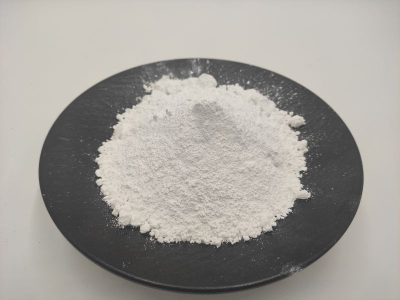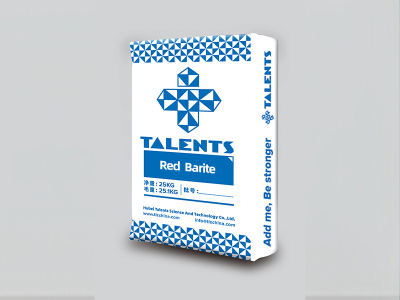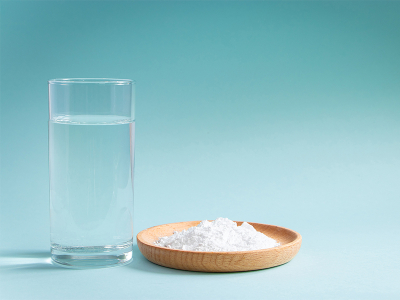Method for chemical purification of barite
Method for chemical purification of barite
With the continuous expansion of the use of ultra-fine modified precipitated barium sulfate, people are more aware of its role. Today, the barium sulfate processing plant summarizes the role of ultra-fine modified precipitated barium sulfate in coating processing. I hope it can help more users to use it better. To improve transparency, the average particle size of ultra-fine modified precipitated barium sulfate is microns, and the particle size distribution is extremely narrow. The particle size of all its particles is below the half wavelength of visible light. Therefore, dispersing it in the resin liquid will improve the coating. transparency.
The chemical industry barium salt factory uses barite as raw material. It is used to produce zinc barium white, precipitated barium sulfate and barium carbonate, which can be used as fillers in paints and coatings to replace high-priced raw materials such as precipitated barium sulfate, lithopone, titanium, active silica, etc. It is suitable for controlling the degree of paint. To make the product glossy and stable, the plastic industry can be used as a filler for plastic ABS raw materials to make the product shiny and bright, and at the same time, it can also improve the product strength. Stiffness and wear resistance, rubber industry products below 500 mesh can be used in large quantities as fillers in rubber products to reduce costs. Product hardness, acid and alkali resistance and water resistance. It has a good reinforcing effect on natural rubber and synthetic rubber. The high-fineness barite powder in the paper industry can be used as filler and coating filler for white board paper and copper board paper.
Through visual comparison, it can be seen that the whiteness of different barium sulfate is different. The higher the whiteness of precipitated barium sulfate, the better the quality. Second, generally speaking. The particle size distribution of barium sulfate is uniform. Third, the lower the oil absorption of barium sulfate. The more you can save production costs. The difficulty of dispersibility also affects the quality of the product. Fourth, natural barium sulfate generally contains many impurities. Precipitated barium sulfate is artificially synthesized to reduce the content of impurities. For barium sulfate. less impurities. The less easy it is to form mechanical black spots, the better the quality will be. Fifth, the finer the precipitated barium sulfate, the more difficult it is to process and the higher the value. method. Of course, it does not mean that the higher the price of barium sulfate, the key is to look at the next industry. Decide on your own product. After all, it is the ideal material for your own use.
Now with the gradual depletion of barite minerals, the grade of barite ore in my country is relatively low, and it is associated with other metals, which also indirectly affects the utilization of barite. The purification methods are generally divided into two types: one is physical purification and the other is chemical purification.
What are the chemical purification methods of barite? There are generally three physical purification methods: hand selection, gravity separation, and magnetic separation. We will not go into details here. Today, we mainly talk about chemical purification methods. Chemical purification methods are also divided into three types: calcination purification, flotation purification and invasion purification. Below we describe these three purification methods in detail.
1. Calcination and purification
Calcination can evaporate inorganic substances, and calcination and impurity removal is mainly used to remove impurities that can be synthesized or evaporated endothermically at low temperature. The impurities will make barite gray, green and blue, which reflects the purity and whiteness of barite, and greatly increases the use price of barite. The calcination process of minerals is reflected in the process of dissociation into a mineral with easier composition or the change of crystal form of the mineral itself, and the process of pyrolysis from one solid phase to another solid phase and harmonious phase. Because barite minerals are mixed with Fe2O3, TiO2, inorganic substances and other impurities in the process of bed formation, the stagnation of the ancient light industry has put forward higher requirements for the purity, whiteness and particle size of barite. Therefore, with the continuous stagnation of scientific technology and the deepening of research, more functions of barite will be brought into it.
2. Flotation purification
Collectors are the key to determining whether barite minerals are effectively combined. With the continuous development and application of low-grade and easy-to-separate barite ore, it is urgent to increase the development and research of high-grade barite ore. What are the methods of chemical purification of barite? Flotation can adapt to various types of barite with simple intercalation, so it is the main method of barite selection at this stage. Barite is often closely associated with minerals such as fluorspar, calcite, and quartz. It is of low grade, finely embedded, and has simple factors. It is difficult to combine effectively with conservative gravity separation processes.
3. Invasion and purification
Barite as a whole cannot be produced as a fine and dedicated commodity, and it still needs to be exported. The acid leaching method is a method of using acid to react with impurities of non-metallic or non-metallic oxides in minerals to form a compound soluble in water or dilute acid. Leaching cracking is mainly used to remove carbon and colored impurities in barite. The main methods to get rid of the impurities of the department are: acid leaching method, oxidation-recovery method, inorganic acid complex illegal.



